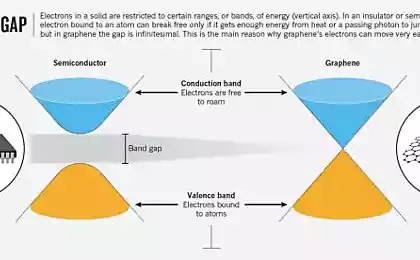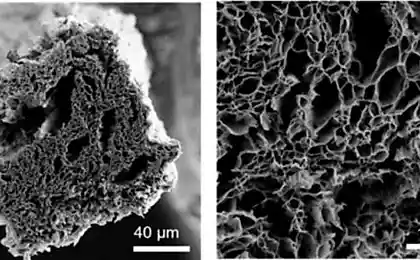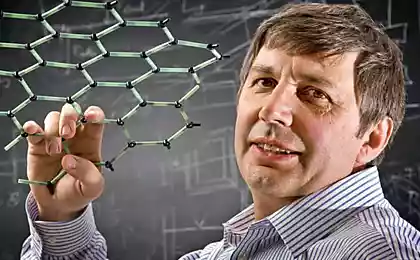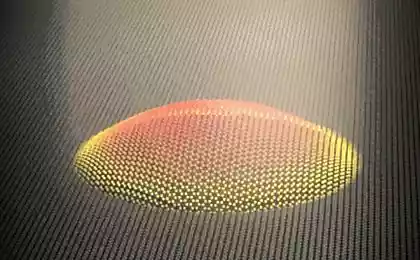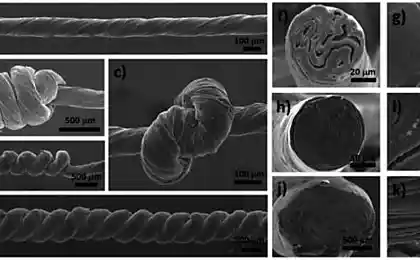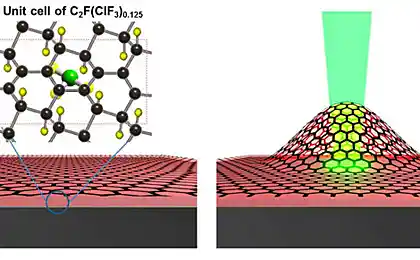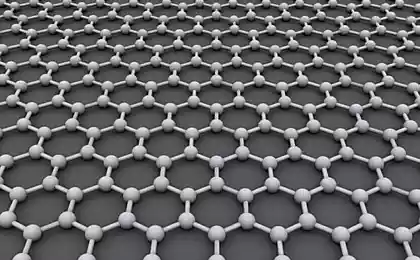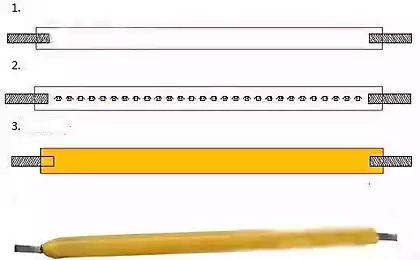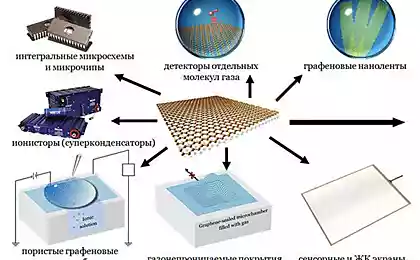452
The first commercial light bulb on the basis of graphene
Two "first in the world" in one product: researchers from the University of Manchester brought to market the world's first light bulb on the basis of graphene, which is also the first commercial application of graphene.

It is expected that this new device will have a lower energy loss, lower operating costs and a longer service life than led lamps.
And it's not just a prototype piece. The team that worked on the development, believes that graphene bulbs will be available at retailers in the next few months.
To implement this plan, the University of Manchester entered into a partnership with a company from the UK Graphene Lighting PLC for the production of new lamps and obtaining a share in the profits from sales. Such a step would undoubtedly assure that the University is serious about commercializing the products developed by the National Graphene Institute (NGI).
"This light indicates that the products based on graphene becomes a reality, it's only been a little more than ten years after the modification of carbon was first isolated is really a short time compared to how much usually last research," said Professor Colin Bailey (Colin Bailey), Deputy head and Vice-Chancellor of the University of Manchester. "This is just the beginning. Our partners consider a number of interesting applications have all been developed right here in Manchester. It's pretty cool that NGI has launched its first product, despite the barely open door in this direction."
Although there is no official confirmation in relation to the actual use of graphene in this technology of lighting, however, the BBC reports that a manufactured bulb can adjust the brightness, and graphene covers like led.
Known as the "home of graphene", University of Manchester, this is the place where a unique form of carbon, was first isolated in 2004, This discovery belongs to sir Andrei Geim (Andre Geim) and sir Kostya Novoselov, the Nobel prize in physics in 2010. Today, with more than 200 researchers across a myriad of research projects two-dimensional material, the University is on the threshold of the graphene know-how.
"Graphene light bulb is proof of what partnership with NGI can create real products that can be used by millions of people," says James Baker, Director of the Graphene PLC.
Scientists of different countries and looking for different ways of using this carbon material. And if we consider that the new EU project, called PlasCarb, studying the method of production of graphene from food waste, then we have the prospect of very efficient and renewable material. published
P. S. And remember, only by changing their consumption — together we change the world! ©
Source: www.ekopower.ru/?p=3405

It is expected that this new device will have a lower energy loss, lower operating costs and a longer service life than led lamps.
And it's not just a prototype piece. The team that worked on the development, believes that graphene bulbs will be available at retailers in the next few months.
To implement this plan, the University of Manchester entered into a partnership with a company from the UK Graphene Lighting PLC for the production of new lamps and obtaining a share in the profits from sales. Such a step would undoubtedly assure that the University is serious about commercializing the products developed by the National Graphene Institute (NGI).
"This light indicates that the products based on graphene becomes a reality, it's only been a little more than ten years after the modification of carbon was first isolated is really a short time compared to how much usually last research," said Professor Colin Bailey (Colin Bailey), Deputy head and Vice-Chancellor of the University of Manchester. "This is just the beginning. Our partners consider a number of interesting applications have all been developed right here in Manchester. It's pretty cool that NGI has launched its first product, despite the barely open door in this direction."
Although there is no official confirmation in relation to the actual use of graphene in this technology of lighting, however, the BBC reports that a manufactured bulb can adjust the brightness, and graphene covers like led.
Known as the "home of graphene", University of Manchester, this is the place where a unique form of carbon, was first isolated in 2004, This discovery belongs to sir Andrei Geim (Andre Geim) and sir Kostya Novoselov, the Nobel prize in physics in 2010. Today, with more than 200 researchers across a myriad of research projects two-dimensional material, the University is on the threshold of the graphene know-how.
"Graphene light bulb is proof of what partnership with NGI can create real products that can be used by millions of people," says James Baker, Director of the Graphene PLC.
Scientists of different countries and looking for different ways of using this carbon material. And if we consider that the new EU project, called PlasCarb, studying the method of production of graphene from food waste, then we have the prospect of very efficient and renewable material. published
P. S. And remember, only by changing their consumption — together we change the world! ©
Source: www.ekopower.ru/?p=3405
Blade printed on a 3D printer supercar
Superpoteri - an interesting entertainment for kids in minutes!
